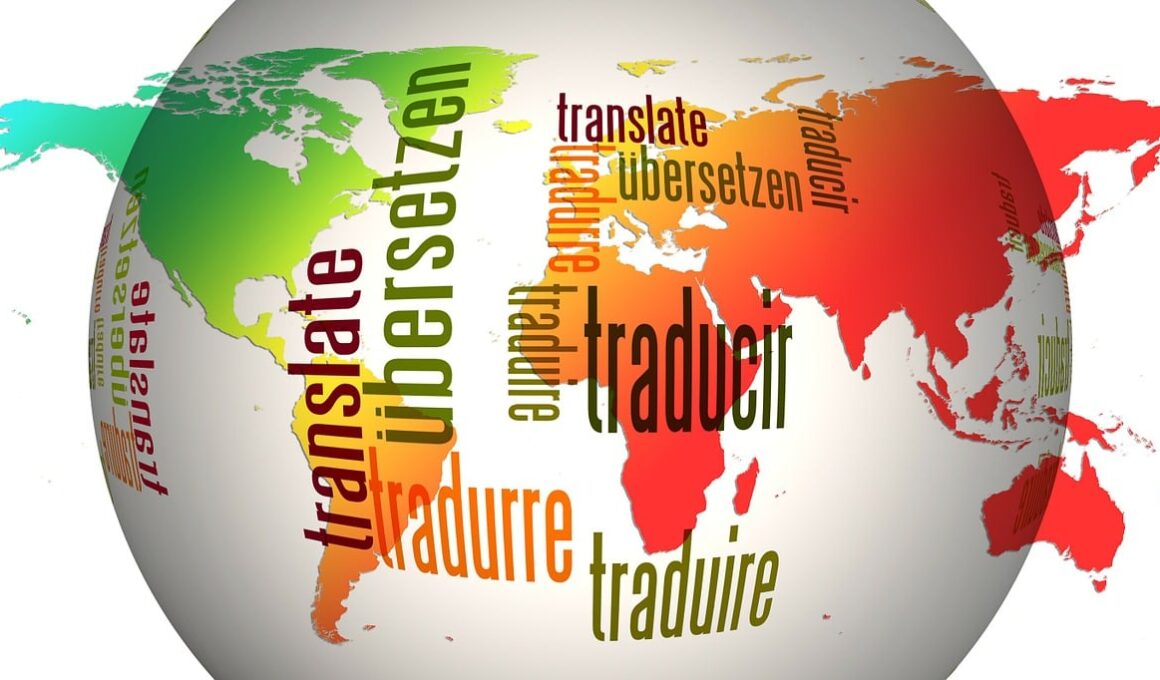Role of Automated Translation Tools in Global Crisis Communications
In today’s interconnected world, effective communication is critical during crises. Automated translation tools play a vital role in bridging language barriers, enabling authorities and organizations to disseminate vital information promptly. In moments of natural disaster, health emergencies, or political unrest, timely updates can save lives. Utilizing sophisticated algorithms and machine learning, these tools can provide translations of messages in real-time, ensuring communities receive immediate support. Crisis management professionals rely on these solutions to convey precise information to diverse populations. The significance of clear messaging cannot be overstated; miscommunication can exacerbate chaos. Automated translation tools empower responders to connect with non-native speakers. Comprehensive studies indicate that timely translations can hasten recovery efforts and reduce panic among affected individuals. In emergencies, delays in communication can lead to misinformation spreading rapidly. Automated systems help mitigate this risk by enabling faster responses from authorities. As technology continues to evolve, the effectiveness and reliability of these tools improve. Organizations are now focusing on integrating advanced translation solutions into their crisis management protocols to enhance communication strategies globally. In doing so, they can ensure all affected parties stay informed and supported.
The Importance of Multilingual Communication in Crises
Understanding linguistic diversity is crucial in crisis situations. During a crisis, individuals from various backgrounds may face a communication barrier. The challenges of language can hinder rescue operations and impede the delivery of essential supplies and services. Automated translation tools ensure accurate and speedy communication, facilitating understanding among affected populations. This technology effectively breaks down these barriers by translating necessary information into multiple languages. It allows for the immediate distribution of instructions and updates crucial for safety and recovery. This avoids confusion and ensures that people know evacuation procedures or health guidelines effectively. Moreover, legal implications arise from miscommunication during crises. Inadequate translations of information can lead to misinterpretation, resulting in liability issues for organization. Automated translation tools provide a safeguard by ensuring messages convey the intended meaning in diverse languages. Language access improves overall community resilience, enhancing coordination with foreign aid organizations and international agencies. Collaboration efforts flourish when communication flows seamlessly across different languages. The significance of multilingual communications extends beyond immediate crisis response, solidifying relationships and fostering trust. Therefore, organizations must prioritize technology investments enhancing their multilingual capabilities.
In addition to immediate crises, automated translation tools serve long-term benefits in community preparedness. Organizations engaged in regular training and simulations can utilize these tools to ensure comprehensive understanding among participants from diverse linguistic backgrounds. Effective training materials can be translated into various languages, ensuring inclusivity. Additionally, public awareness campaigns concerning crisis readiness must also consider linguistic diversity. Engaging all community members can improve overall disaster resilience, resulting in a well-informed population better equipped to manage emergencies. Furthermore, automated tools enable communities to exchange ideas, share best practices, and learn from each other’s experiences across borders. Innovative technologies allow for seamless dialogue among international partners. By translating emergency response plans and resources, organizations foster a stronger collaborative environment. This can ensure forth that help arrives as effectively as possible in times of need. Education systems also benefit immensely from automated translation. Schools can incorporate bilingual resources to teach students about crisis management. Practical knowledge gained during such education empowers future generations to react calmly and effectively to incidents. Thus, investing in translation technologies enhances both present and future crisis management initiatives, creating a more prepared society overall.
Challenges and Limitations of Automated Translation Tools
Despite their potential, automated translation tools face several challenges and limitations. One of the central issues is the accuracy of translations. Although these systems have advanced significantly, they can struggle with contextual meanings, idioms, and culturally relevant expressions. Misinterpretations can occur, potentially leading to dangerous situations during crises. Furthermore, automated tools often rely on data to learn and improve, but they require sufficient linguistic input. Among lesser-known languages or dialects, the lack of available data limits the efficacy of translations. In these instances, human translators may still best address the service requirement. Moreover, the emotional weight of crisis communication can be difficult for machine translation to interpret adequately. Nuances, tones, and subtleties in language convey empathy and reassurance, which a machine may overlook in translations. It’s essential for organizations to recognize these limitations and establish protocols for review. Using human translators alongside automated solutions ensures understanding remains clear. Organizations must carefully assess the reliability of translation tools, especially during high-stakes emergencies. Balancing technology’s efficiency with human insight creates a more robust approach to crisis communication.
The role of automated translation tools in crisis management is profound yet evolving. Continuous advancements in artificial intelligence and machine learning enhance these systems’ capabilities, making them increasingly nuanced in handling diverse linguistic challenges. Stakeholders must remain informed about emerging technologies to leverage translations effectively. Accurately predicting communication gaps is essential for successful crisis management. Organizations may consider adopting hybrid models where automated tools work alongside human expertise. Such a framework fosters better communication and ensures essential messages resonate with affected communities. Besides investing in technology, fostering partnerships with organizations specializing in various languages can improve outcomes. Building strong relationships with linguistic experts aids in addressing translation issues effectively in real-world scenarios. Furthermore, enhancing public understanding of these tools can also empower individuals. Communities should be educated on using automated translation apps during emergencies to access critical information. Events and workshops can facilitate discussions on technology applications in real-life situations. Through effective use of communication strategies, organizations can promote the adoption of automated translation systems. Ultimately, their integration within broader crisis management strategies will lead to improved outcomes for diverse populations globally.
The Future of Automated Translation in Crisis Management
As we look ahead to the future of automated translation in crisis management, several trends emerge. Continuous advancements in natural language processing are transforming how machines understand and produce human-like translation. Researchers are working diligently to refine these tools, aiming for more context-sensitive and culturally aware outputs. These innovations will lead to better-supported communities, especially during crises. Enhanced real-time translation capabilities are also likely, allowing for immediate and more accurate understanding of emergency announcements and responses. Furthermore, the rise of mobile technologies ensures that translation tools are accessible to a broader audience, making them invaluable during emergencies. During natural disasters, users can receive essential information through their preferred languages. The increasing integration of voice recognition technology into translation tools will contribute to their effectiveness. People can communicate crucial details verbally, which is particularly beneficial in time-sensitive situations. Additionally, collaboration between tech firms and humanitarian organizations will result in creating tailored solutions. Such partnerships can identify specific needs within communities and develop tools that address unique challenges. Ultimately, the future of automated translation will significantly strengthen global crisis communication, allowing for timely and effective responses.
In conclusion, the integration of automated translation tools into global crisis communication strategies is essential for effective response measures. Their ability to bridge language gaps ensures that critical information reaches all communities without delay. Automated systems significantly contribute to more efficient crises management. As organizations adapt to an increasingly diverse world, prioritizing technology’s role becomes paramount. The implications extend beyond immediate assistance, fostering long-term relationships and trust. Ongoing support for translations and the emergence of improved technologies will enhance communication strategies. Organizations that embrace these advancements will likely succeed in providing timely and accurate information during crises. The importance of multilingual communication cannot be overstated, as it directly determines the effectiveness of both rescue efforts and overall public safety. However, stakeholders must remain vigilant about the challenges facing automated translation systems. Striking the right balance between technology and human intervention will ultimately drive communications’ success. Engaging communities and nurturing partnerships will also cultivate a better-prepared public. Crisis management professionals need to continually invest in tools that empower them to communicate with affected populations more effectively. Through strategic planning and investment, the landscape of crisis communication will evolve.


